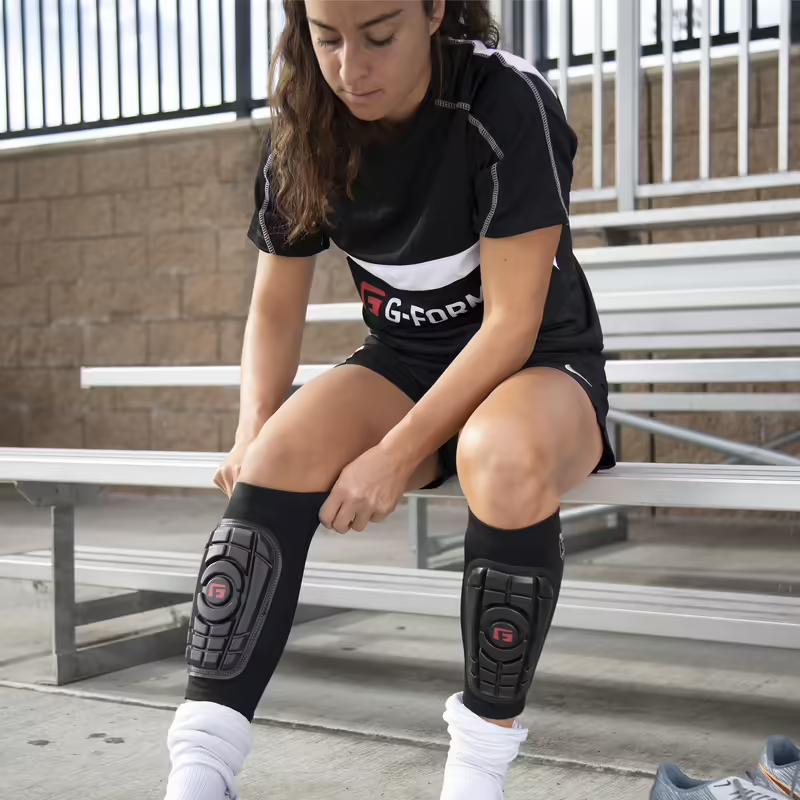
Shin pads are a critical piece of protective gear for athletes participating in contact sports such as soccer, hockey, and rugby. They provide essential protection to the lower leg, safeguarding the shin bone from potential injuries. However, the design of shin pads can have a significant impact on an athlete’s mobility and flexibility on the field. In this article, we will explore the relationship between shin pad design and its effects on mobility and flexibility.
Shin Pad Design Factors
Before delving into the impact of shin pad design on mobility and flexibility, it is crucial to understand the key factors that contribute to the overall design of shin pads.
Material: Shin pads can be made from various materials, including plastic, foam, carbon fiber, and combinations of these materials. Each material offers different levels of protection, flexibility, and weight.
Size and Shape: Shin pads come in different sizes and shapes to cater to varying leg dimensions and playing positions. Some shin pads are narrower and shorter, while others are wider and longer to provide maximum coverage and protection.
Padding Thickness: The thickness of the padding inside the shin pad can vary. Thicker padding provides more impact absorption but can also limit flexibility to some extent.
Strapping System: Shin pads often feature a strapping system to secure them in place. The type of strapping system used can affect the fit, comfort, and mobility of the shin pad.
Impact on Mobility
Mobility refers to an athlete’s ability to move freely and perform agile movements on the field. The design of shin pads can impact an athlete’s mobility in several ways.
Weight: The weight of the shin pads plays a critical role in determining an athlete’s mobility. Heavier shin pads may restrict movement and make it harder to perform quick changes in direction or explosive movements. Lighter shin pads, on the other hand, allow for greater mobility and agility.
Flexibility: The flexibility of the shin pad can greatly influence an athlete’s mobility. Shin pads made from more flexible materials, such as foam or certain types of plastics, allow for a wider range of motion, enabling athletes to move more freely. Stiffer shin pads, on the other hand, may limit flexibility and hinder an athlete’s movements.
Size and Shape: The size and shape of the shin pad can also impact mobility. Shin pads that are too wide or too long may restrict movement and cause discomfort, while shin pads that are too narrow or short may not provide adequate protection. Finding the right size and shape that fits well and allows for optimal mobility is crucial.
Strapping System: The strapping system used in shin pads can affect mobility by either providing a secure fit or restricting movement. Shin pads with adjustable straps that can be tightened or loosened to fit the athlete’s leg provide a better balance between security and mobility.
Impact on Flexibility
Flexibility refers to the range of motion around a joint. It is a critical aspect of athletic performance, enabling athletes to execute movements with precision and efficiency. The design of shin pads can impact an athlete’s flexibility in the following ways:
Padding Thickness: The thickness of the padding inside the shin pad can impact flexibility. Shin pads with thicker padding may limit the range of motion around the ankle and knee joints, affecting an athlete’s flexibility. Shin pads with thinner padding or strategically placed padding can provide adequate protection while allowing for greater flexibility.
Articulation Points: Some shin pads feature articulated sections that mimic the natural movement of the leg. These articulated sections allow for increased flexibility and better range of motion. They are especially beneficial for sports that require extensive running and dynamic movements, such as soccer.
Material: The material used in the construction of shin pads can impact flexibility. Shin pads made from more rigid materials, such as hard plastic or carbon fiber, may restrict flexibility to some extent. On the other hand, shin pads made from more flexible materials, such as foam or softer plastics, allow for better flexibility.
Finding the Right Balance
Achieving the right balance between protection, mobility, and flexibility is crucial when selecting shin pads. Athletes must consider their specific needs, the demands of their sport, and their personal preferences.
For sports that prioritize speed, agility, and quick changes in direction, such as soccer, shin pads made from flexible materials with thinner padding may be more suitable. These shin pads allow for better mobility and flexibility, enabling athletes to move freely and execute technical skills with ease.

